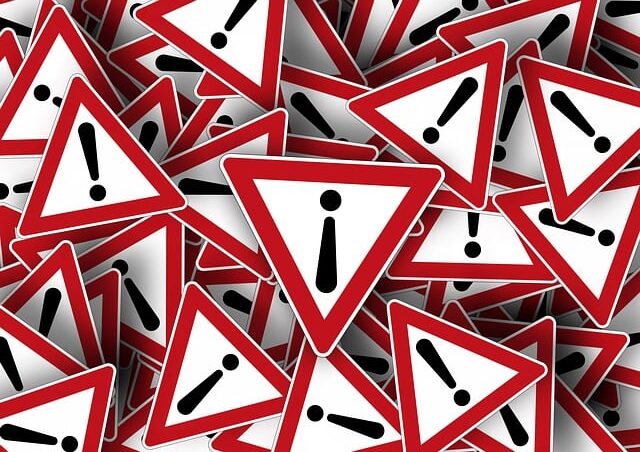Introduction: Why Jacksonville Faces Unique Network Challenges
Computer network issues in Jacksonville affect homes, small businesses, and large organizations in noticeable ways. The city’s rapid growth, expanding commercial centers, and coastal weather conditions create a mix of technical challenges that require thoughtful planning and reliable maintenance. While some problems resemble those in any major city, others stem from local factors such as humidity, infrastructure variations, and service provider inconsistencies.
Many Jacksonville residents and business owners report recurring disruptions, slow speeds, spotty Wi-Fi coverage, and hardware failures. These issues often escalate during peak usage hours or after storms. Understanding the root causes helps prevent downtime and offers a more stable experience for both remote work and day-to-day operations. This article breaks down the most common network problems in Jacksonville and explains how they impact performance.
1. Frequent Internet Slowdowns Across Residential Areas
Several neighborhoods in Jacksonville struggle with inconsistent internet speeds, especially during evenings when usage spikes. These slowdowns often occur because multiple households share the same network infrastructure, and service providers must balance heavy traffic. As a result, a connection that performs well in the morning might become sluggish later in the day.
Another common factor is aged wiring or older modem equipment in homes. Many Jacksonville properties, especially those built before the 2000s, still rely on outdated cabling that doesn’t handle modern speeds efficiently. When paired with old routers, Wi-Fi signals weaken even more, causing lag during video calls, online classes, and streaming.
Typical causes of slowdowns:
- Congested provider networks
- Old or damaged wiring
- Outdated routers or modems
- Poor Wi-Fi placement inside the home
2. Weather-Related Network Interruptions
Jacksonville’s coastal climate directly influences network stability. Heavy rain, high humidity, and frequent lightning storms often disrupt cables, wireless equipment, and power lines. Even brief power fluctuations can affect routers, switches, and access points, leading to temporary outages or long-term performance decline.
Storm activity is a major concern for both homes and businesses. Lightning strikes can travel through Ethernet lines or power connections, damaging equipment instantly. Meanwhile, humidity encourages corrosion in outdoor cables, which weakens signals over time. These weather-related issues contribute to intermittent connectivity that many Jacksonville users experience throughout the year.
Weather impacts typically include:
- Router or modem failure after power surges
- Water damage to outdoor cabling
- Corroded connectors causing weak signals
- Widespread outages during severe thunderstorms
3. Wi-Fi Coverage Gaps in Larger Homes and Offices
Jacksonville is known for its spacious homes, multi-floor layouts, and open office designs. These features are desirable, but they often create Wi-Fi dead zones. Long hallways, thick walls, metal framing, and concrete structures can interfere with wireless signals and reduce coverage.
In business environments, multiple rooms and conference areas make it difficult for a single access point to serve everyone effectively. Employees may notice dropped calls, slow connections during meetings, or delays when transferring files across the network. Without proper planning, these coverage gaps can frustrate teams and reduce productivity.
Common reasons for Wi-Fi gaps:
- Distance from routers
- Interference from walls or appliances
- Insufficient access points in office layouts
- Routers placed in low or obstructed locations
4. Service Provider Fluctuations and Coverage Differences
Jacksonville residents often report inconsistent service quality depending on their neighborhood and provider. Some areas enjoy strong fiber connections, while others rely on aging coaxial networks. These infrastructure differences lead to uneven performance across the city.
Service provider outages are also more common in developing areas where new construction is ongoing. Roadwork, fiber installation, or electrical maintenance can temporarily disrupt local networks. For businesses that depend on stable connectivity, even minor interruptions impact customer service, payment processing, and internal communication.
Typical provider-related issues:
- Coverage gaps in older neighborhoods
- Delays in infrastructure upgrades
- Area-specific outages
- Limited options for high-speed fiber
5. Hardware Failures and Poor Maintenance
Network hardware wears down over time, especially in humid environments like Jacksonville. Routers, switches, cable connectors, and access points can become less reliable as they gather dust, heat up, or experience voltage fluctuations. Many homeowners and small businesses overlook routine maintenance, leading to avoidable breakdowns.
Additionally, improperly installed equipment contributes to recurring problems. Loose cables, outdated firmware, and unmanaged switches create vulnerabilities that reduce overall network performance. Without regular checkups, these issues often snowball into bigger disruptions.
Hardware-related problems often include:
- Overheated or aging routers
- Dust buildup inside network cabinets
- Old Ethernet cables with damaged shielding
- Firmware that hasn’t been updated
6. Network Security Risks Facing Local Businesses
Businesses across Jacksonville — from River City offices to beachside shops — face growing security concerns due to aging systems, weak passwords, and limited monitoring. Cyberattacks have become increasingly common, targeting small and mid-sized businesses that rely on outdated firewalls or improperly configured routers. Once attackers gain access, they can disrupt operations, steal data, or lock systems behind ransomware.
Many local businesses also struggle with employee-related vulnerabilities. Simple mistakes like clicking unsafe links, connecting to unsecured Wi-Fi, or using personal devices without proper safeguards open the door to major issues. These risks highlight the need for stronger training, modern security tools, and clear internal policies to protect sensitive information.
Frequent security gaps include:
- Weak or reused passwords
- Unpatched software and firmware
- Unsupported operating systems
- Lacking antivirus or endpoint protection
7. Issues Caused by Poor Network Design
Jacksonville’s rapid growth means many businesses expanded their operations without updating their networks. Offices that were initially designed for a few employees now support dozens of users, multiple devices, cloud-based tools, and heavy data traffic. When infrastructure doesn’t scale properly, networks become slow, unstable, and difficult to manage.
A poorly designed network often leads to bottlenecks. For example, improper switch placement, insufficient bandwidth allocation, or cheap consumer-grade routers can’t support professional workloads. These design flaws affect communication tools, cloud applications, and day-to-day workflow, making routine tasks unnecessarily frustrating.
Network design issues often involve:
- Overloaded switches or access points
- Lack of segmentation between departments
- Inadequate cable management
- Using home-grade equipment in business setups
8. Challenges with Remote Work and Hybrid Offices
As more Jacksonville companies adopt remote and hybrid work models, network issues extend beyond office walls. Employees working from home depend on personal Wi-Fi networks, many of which lack proper security or stability. Slow speeds, outdated routers, and interference from household devices often affect productivity during remote meetings or file-sharing tasks.
Meanwhile, hybrid offices must balance in-office and remote connections simultaneously. This requires stronger bandwidth, improved VPN solutions, and well-managed access controls. Without updates, businesses find themselves dealing with dropped calls, login delays, and frequent troubleshooting across different locations.
Typical remote-work-related problems:
- Weak home Wi-Fi coverage
- Inefficient VPN configurations
- Higher bandwidth requirements
- Limited support for remote staff
9. Network Congestion in High-Traffic Commercial Zones
Jacksonville’s busiest commercial districts — including Southside, Town Center, and downtown — often experience unusual network congestion. Large clusters of offices, retail spaces, and hospitality venues share limited network infrastructure, causing slower speeds during peak business hours. This congestion particularly affects cloud-based tools that require constant, stable connections.
Public Wi-Fi networks in these zones also struggle with capacity. When too many users connect at once, performance declines sharply. Businesses that depend on guest Wi-Fi, such as cafes or coworking spaces, face customer frustration and reduced service quality unless they invest in stronger hardware and bandwidth.
Common congestion-related limitations:
- Slow speeds during peak hours
- Long loading times for cloud apps
- Frequent disconnections on public Wi-Fi
- Competing demand between multiple businesses
10. The Growing Impact of Smart Devices
Jacksonville homes and offices are becoming more connected, with smart TVs, cameras, thermostats, access controls, and IoT sensors relying heavily on Wi-Fi. While these devices improve convenience and automation, they also increase network load. Every new device competes for bandwidth and contributes to congestion if the network isn’t prepared for the increased demand.
Smart devices can also introduce new vulnerabilities. Inexpensive or outdated IoT gadgets often lack proper encryption, creating weak points in the network. Without regular updates and proper configuration, they become paths for unauthorized access or data breaches.
IoT-related challenges include:
- Bandwidth competition
- Weak device security
- Poorly configured home networks
- Higher risk of unauthorized access
Conclusion
Computer network issues in Jacksonville stem from a mix of environmental conditions, infrastructure differences, growing population demands, and evolving technology habits. Homes deal with slow speeds and Wi-Fi dead zones, while businesses face challenges such as security risks, outdated equipment, and rising remote-work requirements. Addressing these issues requires a combination of proper maintenance, stronger hardware choices, thoughtful network design, and regular updates.
By understanding the causes behind these common network problems, Jacksonville residents and organizations can make smarter decisions that improve reliability and performance. Whether upgrading equipment, reinforcing security, or redesigning an office network, proactive measures help reduce downtime and create a smoother digital experience throughout the city.
For more quality, informative content, visit writewhiz





